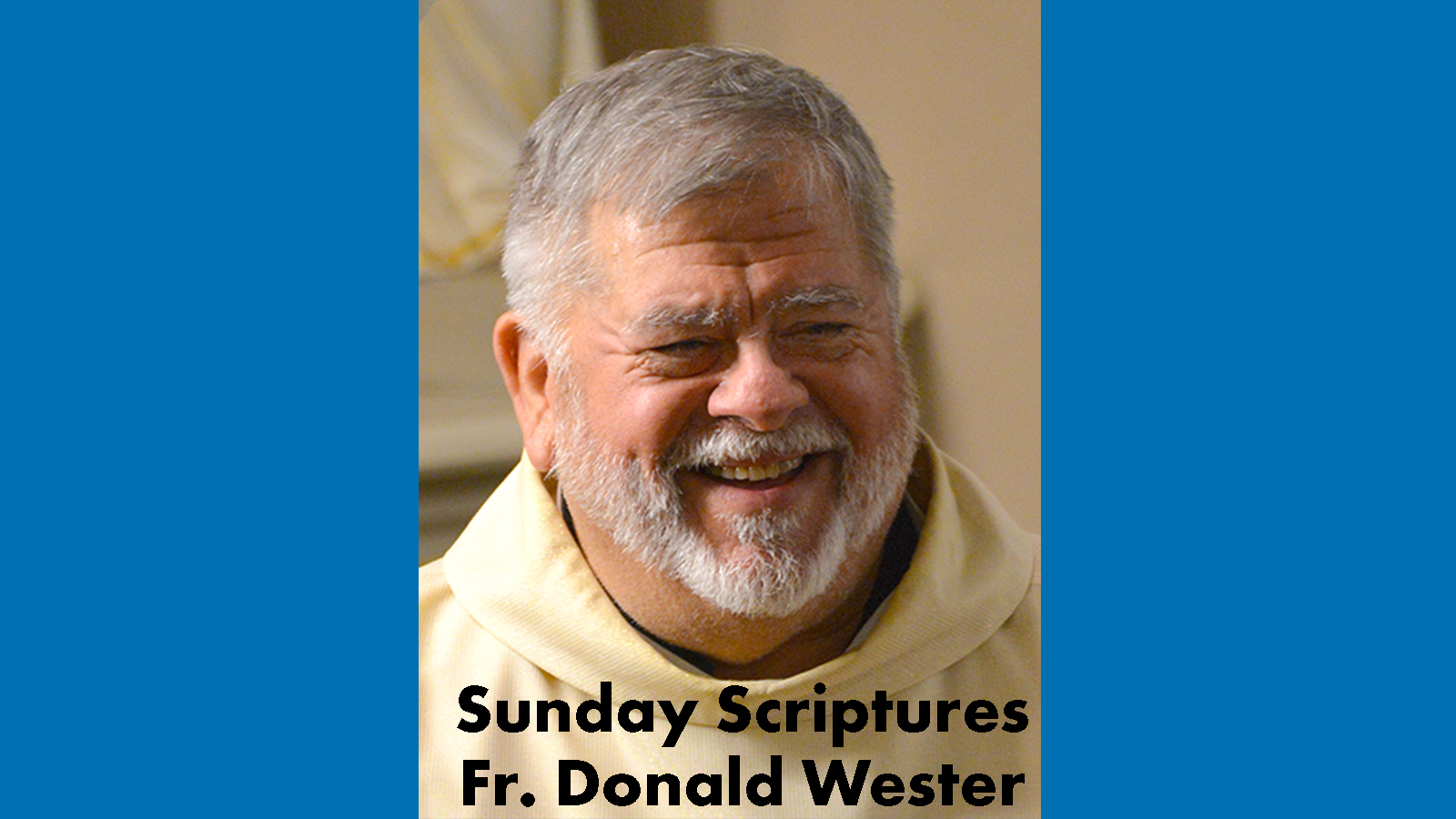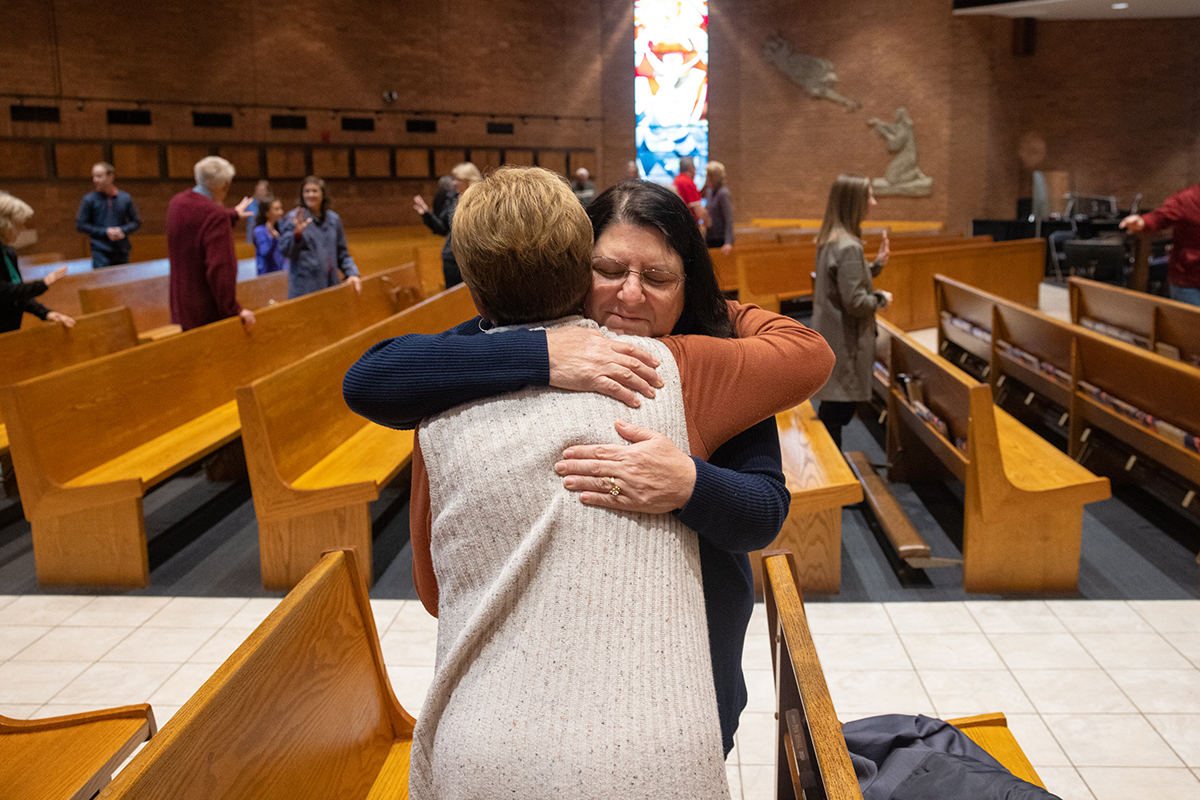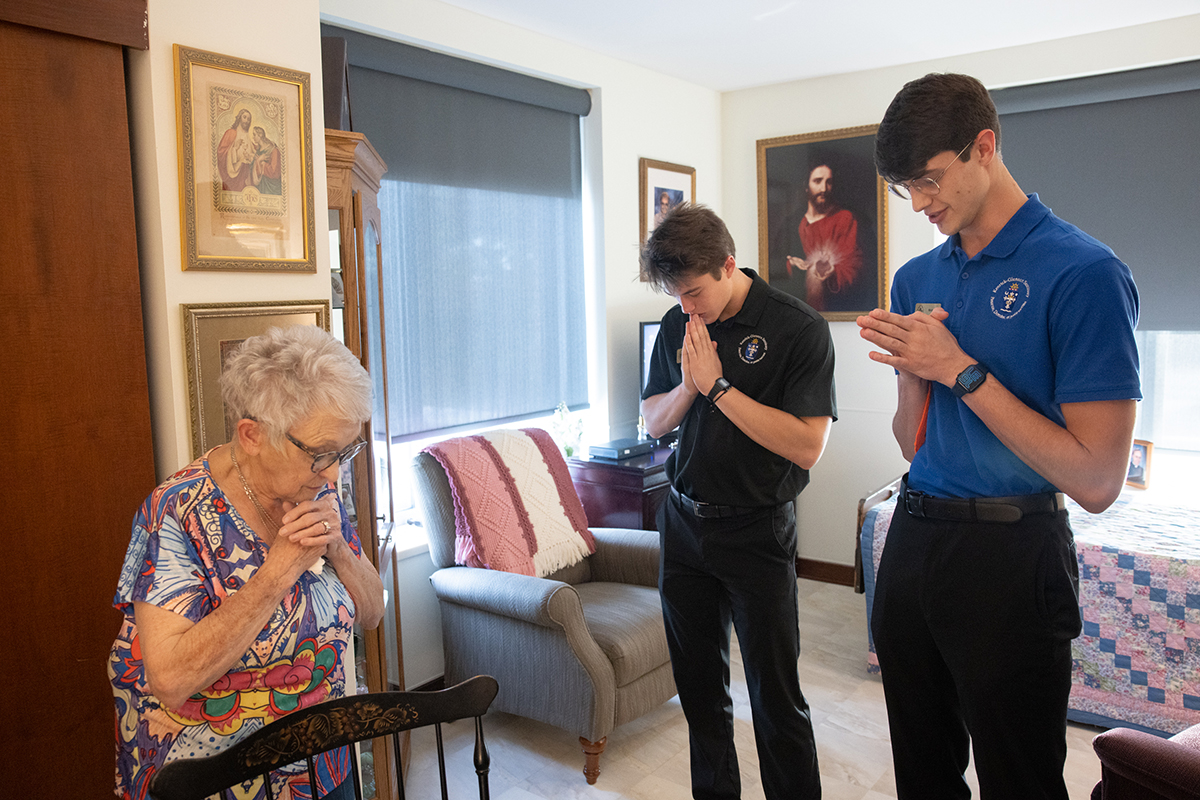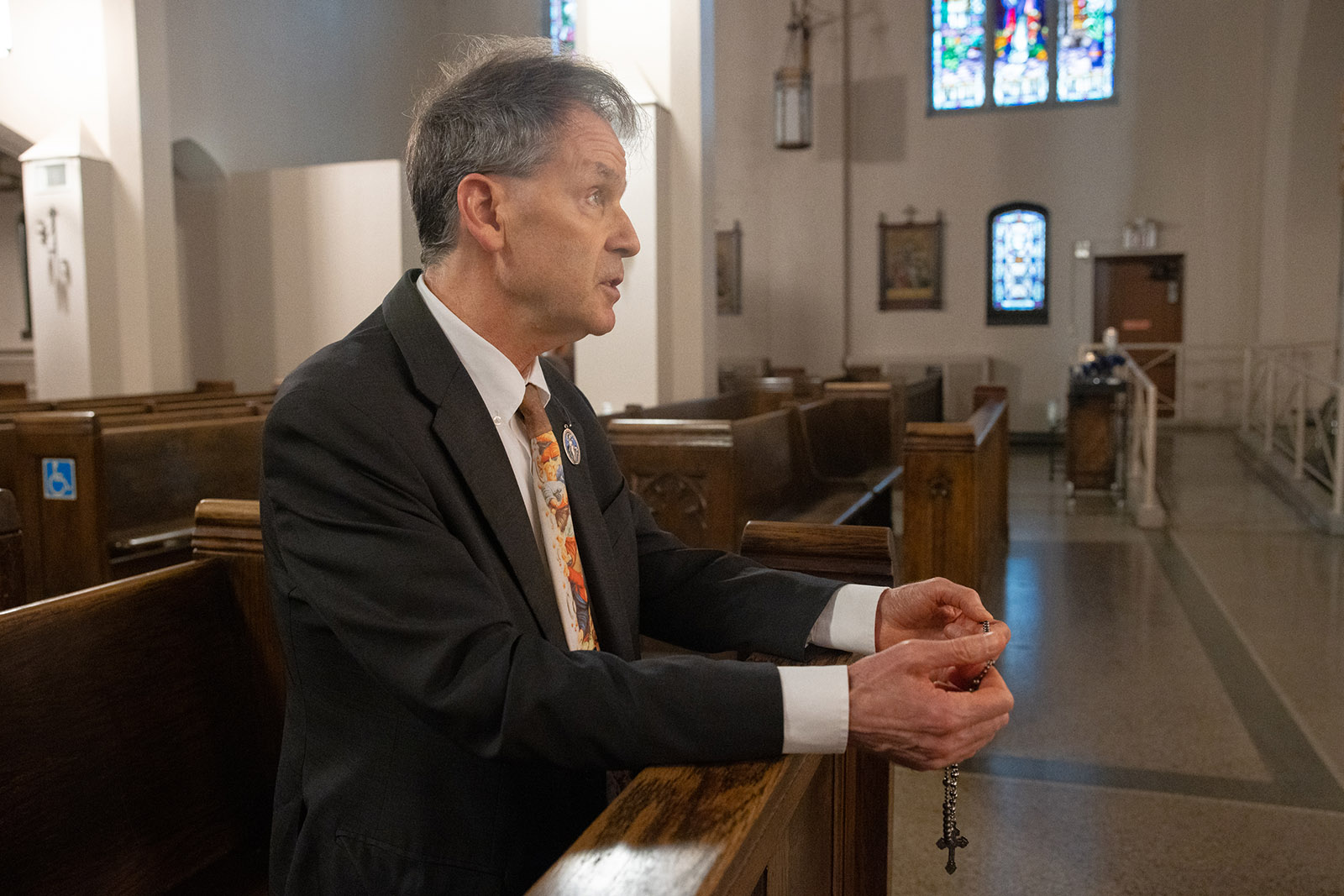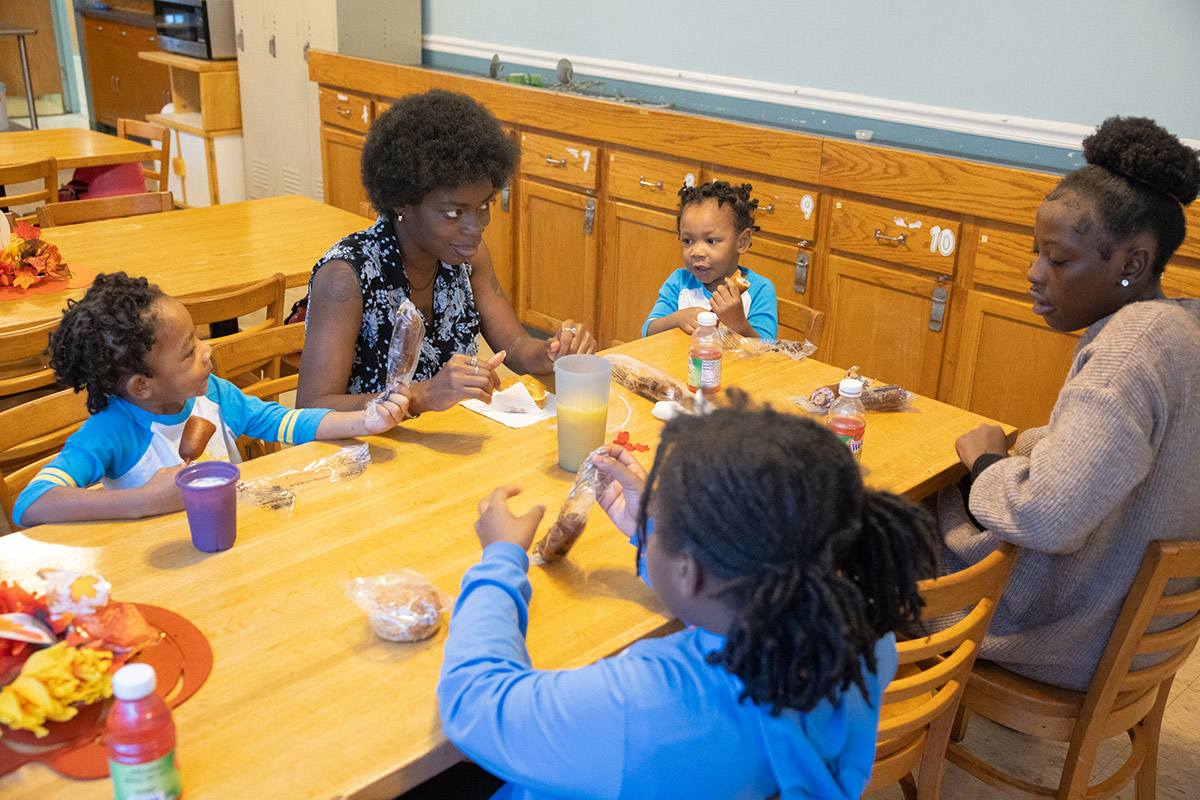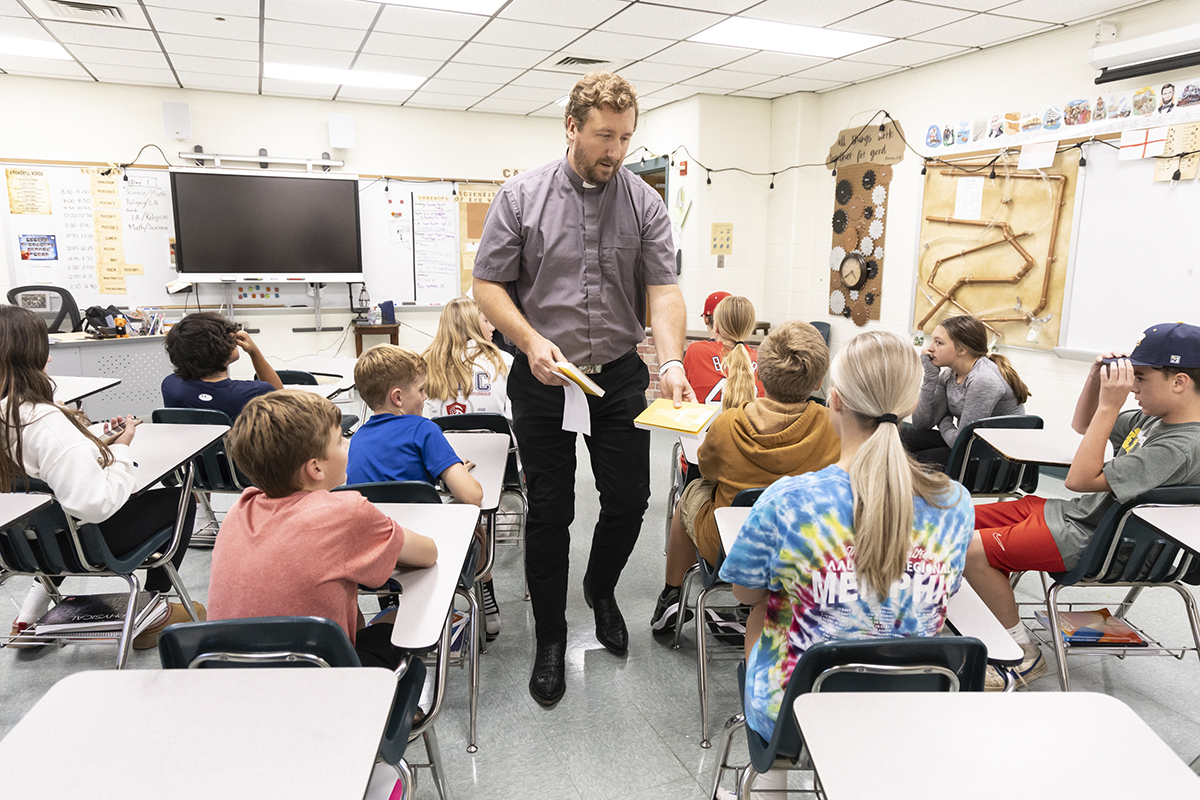Parents, schools help children wade through distractions of Christmas
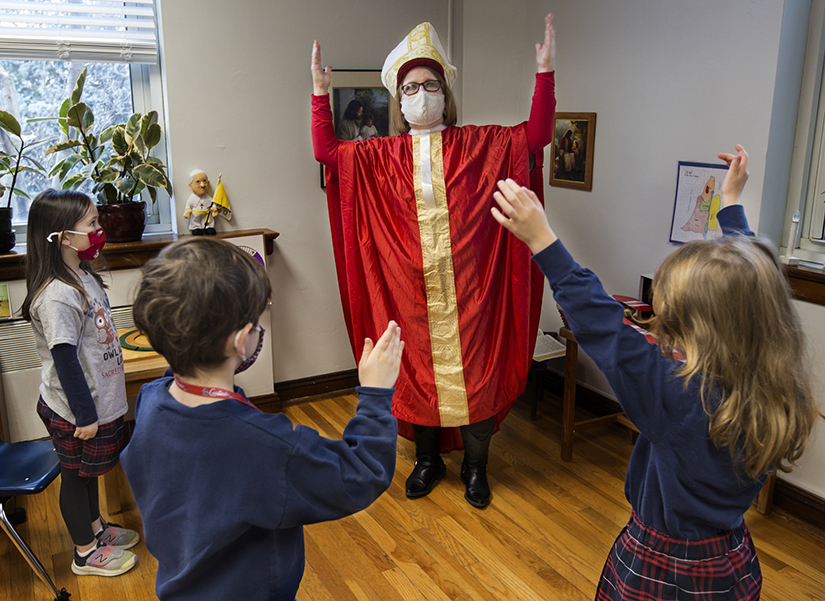
Parents, schools help the meaning of Christmas come through despite culture’s focus on consumer aspects
Tracy and Matt Lauer come from families with a deep faith and were taught the importance of charity and kindness as core Catholic values. They now share these values with their sons Andy, 12, and Henry, 9, as often as possible.
For the Lauers, Christmas is a special opportunity to teach lessons about charity and traditions. “We often remind our sons how fortunate we are to have a big, close family and that we have the ability to share our time, talent and treasures with others,” Matt reflected. “We try to include them on our charitable opportunities, and explain the importance of gift giving, over gift receiving.”

They also share respective family traditions, why they have a Christmas tree, why they decorate when they do, and the importance of keeping the Nativity as the focal point of the season. “As we move through the Advent calendar, we take the opportunity to discuss the religious and historical reasons why we do what we do,” he explained. “With an inquisitive 9-year-old who soaks up all of the information we can, he often questions a lot about our faith. When the boys have PSR, the ride home and the time after is a great opportunity to discuss what they learned and often Henry has a lot of questions.”
The Lauers, parishioners Queen of All Saints Parish in Oakville, believe it’s important that their sons know where their family roots came from, and they share how faith has long been at the center of their history and traditions as a family.
Waiting for the birth of Jesus
It’s often difficult for families to focus on the upcoming remembrance of the birth of Christ during Advent with all the commercial aspects of pre-holiday shopping, decorating and activities. Raegan Palka and her husband, Kevin, appreciate the help they get on the meaning of Christmas from their children’s schools, including Sacred Heart Villa in St. Louis where their 5- and 4-year-olds attend. But she and her husband reinforce the religious aspects of Christmas, starting when their children are young, telling them that “you’re not just waiting for Santa to come, but you’re waiting for the birth of Jesus.”
Santa and similar Christmas decorations typically adorn the home along with a large manger scene. They hold off on putting up those decorations and the Christmas tree. “That way Advent gets to be its own season,” Palka said.
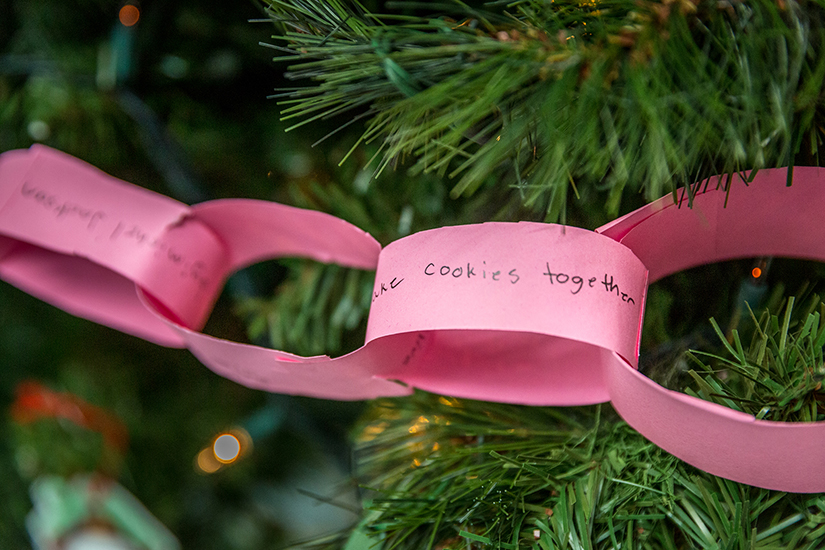
The family keeps the tree up until The Epiphany of the Lord.
Being part of a parish means taking part in efforts to give gifts to people in need, Raegan said. “It’s another way to make it less commercial and to think less about what toy you’re going to get,” which also helps.
At the early childhood center campus of Holy Cross School in Affton, each classroom has a Nativity set to use that is age-appropriate, and the teachers read the Christmas story about Mary, Joseph and the birth of Jesus. The students learn religious Christmas songs such as “Advent is a Time to Wait.” They also have shepherd’s robes and a gown of Mary so students can participate in the story.
Julie and Chris Seyer, parents of four children at Holy Cross School and parishioners of St. Michael in Shrewsbury, have an Advent wreath on the dining room table where they eat together and a Nativity scene set up in the foyer along with other decorations and family traditions. They appreciate working with the school on religious education, including a Nativity activity book that provided activities and prayers to teach about Advent and the meaning of Christmas. Also an important aspect is the Christmas concert/pageant at the school.
Connecting with parents, children

At Sacred Heart Villa, an early childhood center for children age 2 through kindergarten, the Catechesis of the Good Shepherd program is the “heart and soul” of the program, said Kris Doder, executive director. The hands-on program has dioramas that assist the children in the Christmas story. They have a weekly Advent prayer service that is recorded for parents. “The connection with parents is so important,” Doder said. “We make sure that whatever we are doing here translates to the parents. We tell them that this is a period of waiting, of hope, of joy, peace and love.”
Genevieve Price teaches 4- and 5-year-olds in the pre-kindergarten class at St. Bridget School in Pacific. “We start by talking in depth about what Advent is, waiting for Jesus’ birth, why He came because he loved us so much,” Price said.
They delve into themes of love, joy, hope and peace. They make ornaments for their class Christmas tree, focusing on gratitude, later taking them home and putting them on their own trees. They also read about the Christmas story, and the principal shares Bible stories each day every morning through Advent. Each child added a piece to an Advent wreath with the children listing what they’re thankful for — from siblings to trees.
St. Bridget also has an Advent tree with the saint of the day added to it during Advent. It’s all designed to help students find the meaning of Christmas through the Church, not slick advertising slogans.
>> What to do
Genevieve Price, a pre-kindergarten teacher at St. Bridget School in Pacific, recommends ways for parents to educate children on the meaning of Christmas:
• Read books to your children about Christmas and the birth of Jesus. Price likes the holiday favorite “Little Drummer Boy” and a Berenstain Bears set of books on the joy of giving.
• Do Advent calendars that provide a daily act of kindness or Bible verse to read, for example.
• Make a paper chain in anticipation of Christmas and ask family members to record an act of self-giving they did and display the chain in the home.
• Incorporate a daily step-by-step move of the Magi during Advent toward the final Nativity scene.
>> Celebrate St. Nick
More than 125 children took part in a virtual celebration Nov. 5 for St. Nick sponsored by Pauline Books and Media in Crestwood. Most participants were from St. Louis, but families from coast to coast and even Canada also took part.
The Sisters of St. Paul, who operate the store and a media ministry, included clips in the virtual event of a “Saint to Santa” DVD on St. Nicholas and songs recorded by a Daughters of St. Paul choir.
Pointing out the Christmas trees and the baby Jesus in the background, Sister Laura Brown said, “This whole morning is about preparing our hearts for the Baby Jesus. Because He’s the reason for the season.”
Children learned that St. Nicholas gave away his money to poor people in what is now Turkey and followed Jesus, becoming a priest and eventually a bishop. They also learned how he started giving money to people anonymously at night. He became known as Santa Claus, someone who is filled with joy and wants to give presents to others to celebrate Jesus’ birthday, the children were told.
Also presented were ways to prepare for Jesus, including making Him a birthday card or giving Him gifts such as doing things for others.
Santa Claus, evergreen trees, wreaths and more have ties to Christianity
BY JOSEPH KENNY | jkenny@archstl.org | twitter: @josephkenny2
One of the notable Church leaders who was persecuted in the late third century was St. Nicholas.
Tradition tells of St. Nicholas being born around AD 280, the only child of a wealthy, elderly couple who lived in Patara, Asia Minor (present-day Turkey). When his parents died in a plague, Nicholas inherited their wealth.
Nicholas generously gave to the poor, but he did so anonymously, as he wanted the glory to go to God.
William Federer, author of “There Really Is a Santa Claus: The History of Saint Nicholas and Christmas Holiday Traditions,” writes that a bankrupt merchant had the idea of marrying his daughters off so creditors could not take them. Unfortunately, he did not have money for a dowry, which was needed in that area of the world for a legally recognized wedding.
Nicholas heard of the merchant’s dilemma and, late one night, threw a bag of money in the window for the oldest daughter’s dowry. Supposedly the bag of money landed in a shoe or a stocking that was drying by the fireplace. He repeated it for the other daughters.
This, Federer wrote in his American Minute blog post, was the origin of secret, midnight gift-giving and hanging stockings by the fireplace on the anniversary of St. Nicholas’ death, which was Dec. 6, 343 AD.
St. Nicholas later became the Bishop of Myra. He was known, among other things, for confronting heretics and corrupt government leaders. He chose to be imprisoned by the Romans rather than deny his Christian faith; he stood for the doctrine of the Trinity; preached against immoral pagan temples.
Most notably of all, Federer wrote, “St. Nicholas was very generous, giving away all his money, anonymously, to help the poor in their time of need.”
St. Nicholas gift-giving eventually led to modern-day Santa Claus.
Other Christmas traditions

• The Christmas wreath represents eternity because of its circular shape. An octagon is similar in shape, circular yet with squares within them, representing the Incarnation.
• Evergreen trees also represent eternal life because they don’t lose their leaves. Originally, the German custom was to light candles on fresh trees representing the light of Christ. The use of evergreen

trees is traced to St. Boniface, who went to convert tribes known for barbaric traditions. St. Boniface explained that the tree points to heaven, has everlasting life and is in the shape of a triangle, helpful in teaching about the Trinity.

• Gift-giving originates with the gifts of the Magi to the infant Jesus. It was much simpler in the 19th century and has become a time of big, expensive gifts. It used to be a simple gift of an orange, or a handmaid item. The O Henry short story, “The Gift of the Magi,” emphasizes the meaning behind gifts.
• Santa Claus takes a cue from St. Nicholas.
• Holly refers to the thorns in Jesus.
• Christmas caroling began during celebrations of the winter solstice. Christians began singing carols in celebration of the birth of Jesus, turning the pagan songs into religious ones.

• The 12 days of Christmas refer to the span between the birth of Christ and the coming of the Magi, the three wise men.

• A new tradition is Mary on the Mantel, an alternative to the also recent Elf on a Shelf. Rather than reporting mischief, every morning Mary can be found with a message encouraging children to do a specific act of kindness each day. The concept was created by Be a Heart, a Catholic lifestyle products company. The Mary doll is intended to help children enter more deeply into Advent by encouraging parents to engage in conversations with their children about each feast day during the season of Advent.

Tracy and Matt Lauer come from families with a deep faith and were taught the importance of charity and kindness as core Catholic values. They now share these values with … Parents, schools help children wade through distractions of Christmas
Subscribe to Read All St. Louis Review Stories
All readers receive 5 stories to read free per month. After that, readers will need to be logged in.
If you are currently receive the St. Louis Review at your home or office, please send your name and address (and subscriber id if you know it) to subscriptions@stlouisreview.com to get your login information.
If you are not currently a subscriber to the St. Louis Review, please contact subscriptions@stlouisreview.com for information on how to subscribe.

